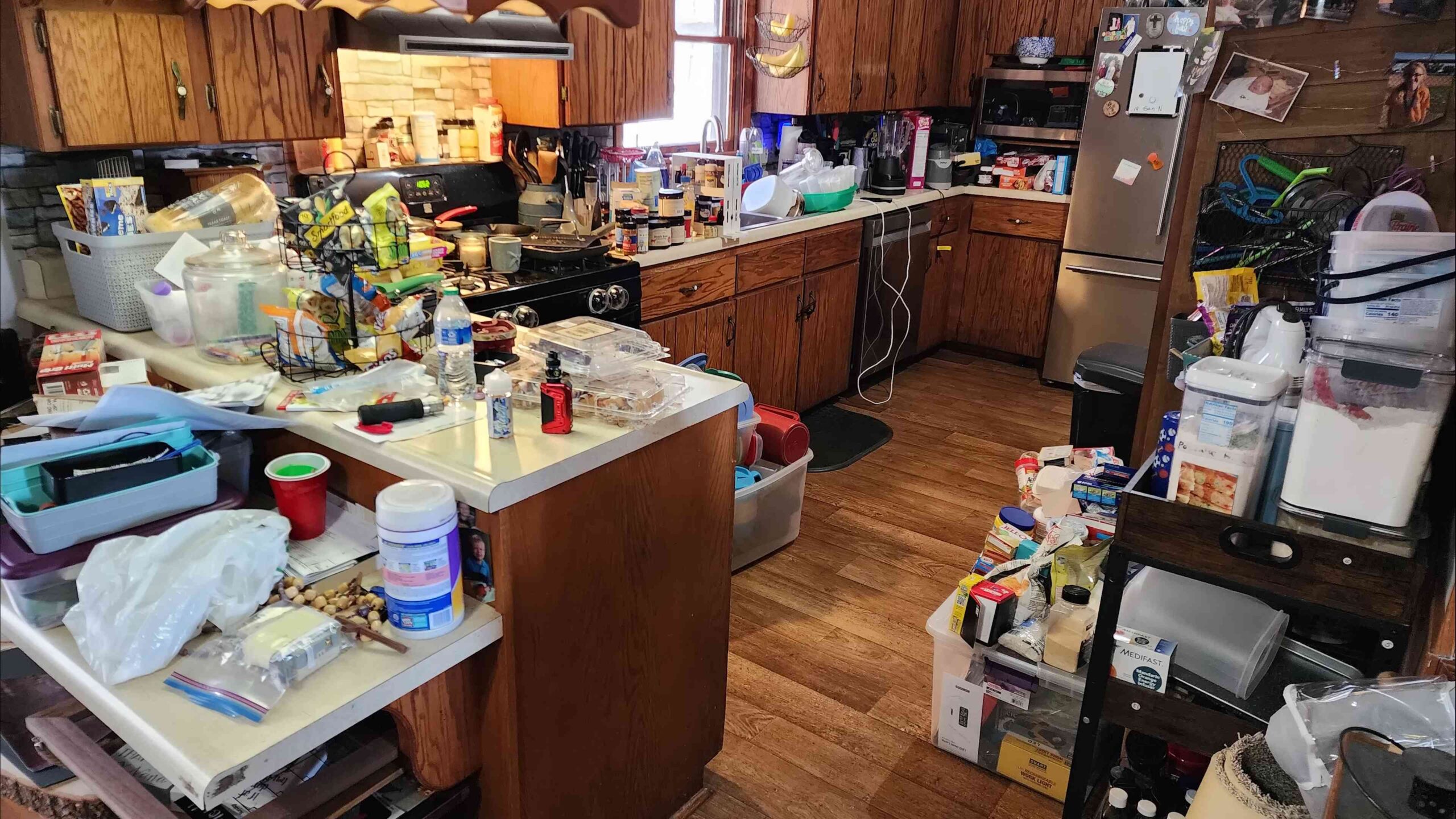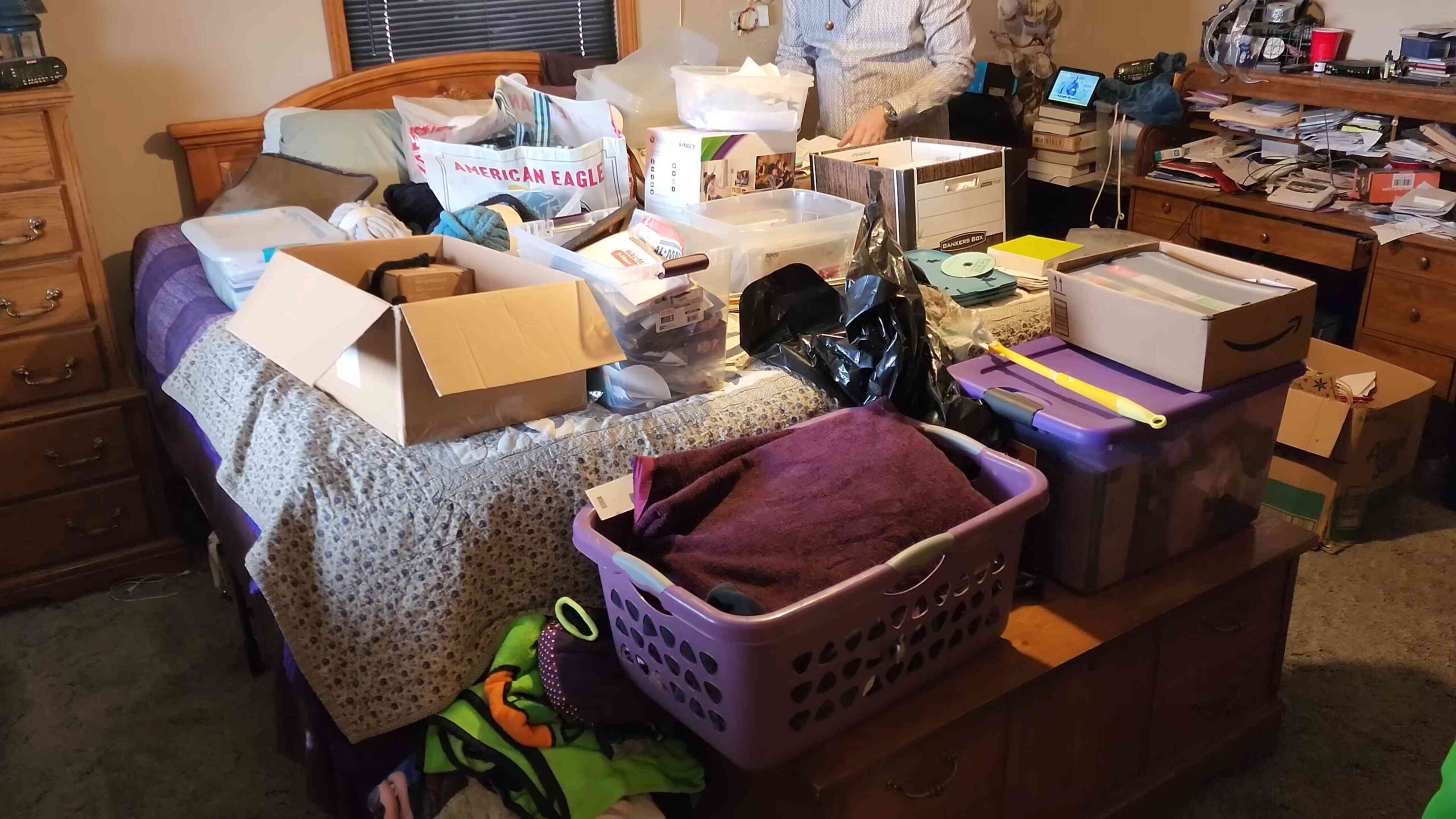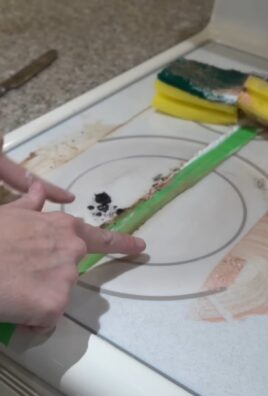Hoarder Cleaning Checklist: Feeling overwhelmed by the clutter? I get it! Tackling a hoarding situation can seem like climbing Mount Everest in flip-flops. But don’t despair! This isn’t just about tidying up; it’s about reclaiming your space and, more importantly, your peace of mind.
For generations, cultures around the world have valued the importance of a clean and organized home. From the ancient practice of Feng Shui, which emphasizes the flow of energy in a space, to the simple satisfaction of a well-kept dwelling, our surroundings profoundly impact our well-being. However, when hoarding tendencies take hold, these principles are often disrupted, leading to stress, anxiety, and even health hazards.
That’s why I’ve created this comprehensive Hoarder Cleaning Checklist. It’s designed to break down the daunting task into manageable steps, providing you with a clear roadmap to a cleaner, healthier, and happier living environment. This isn’t just a list; it’s a guide to help you navigate the emotional and practical challenges of decluttering. Whether you’re assisting a loved one or tackling your own space, this checklist will empower you to take control and create a home you can truly thrive in. Let’s get started!

DIY Hoarder Cleaning Checklist: Reclaim Your Space!
Okay, tackling a hoarding situation can feel incredibly overwhelming. Trust me, I get it! It’s not just about tidying up; it’s about compassion, patience, and a systematic approach. This checklist is designed to break down the process into manageable steps, helping you (or someone you’re helping) reclaim a safe and livable space. Remember, progress, not perfection, is the goal!
Understanding the Situation
Before you even think about grabbing a trash bag, it’s crucial to understand the underlying issues. Hoarding is often linked to anxiety, depression, or other mental health conditions. Approaching the situation with empathy and respect is key.
* Assess the Scope: Take a good, hard look at the space. How many rooms are affected? What types of items are hoarded (newspapers, clothes, food containers, etc.)? This will help you estimate the time and resources needed.
* Safety First: Are there any immediate safety hazards? Blocked exits, fire hazards (piles of paper near electrical outlets), mold, pests, or structural issues need to be addressed immediately.
* Communicate: If you’re helping someone else, have an open and honest conversation about the process. Explain your goals and reassure them that you’re there to support them, not to judge.
* Set Realistic Goals: Don’t try to clear out the entire house in a weekend. Start small, focus on one area at a time, and celebrate each milestone.
Phase 1: Planning and Preparation
This phase is all about getting organized and gathering the necessary supplies. A little planning goes a long way in making the actual cleaning process smoother and more efficient.
* Create a Cleaning Schedule: Break down the project into smaller, manageable tasks. For example, “Clear out the kitchen counter” or “Organize the living room bookshelf.”
* Gather Supplies: You’ll need a variety of cleaning supplies, including:
* Heavy-duty trash bags (lots of them!)
* Recycling bins
* Cardboard boxes for donations
* Cleaning solutions (all-purpose cleaner, disinfectant, mold remover if needed)
* Sponges, scrub brushes, and cloths
* Gloves and masks (for protection against dust, mold, and other allergens)
* A sturdy step stool or ladder
* A vacuum cleaner with a HEPA filter
* Shovels and rakes (for removing large piles of debris)
* First-aid kit
* Enlist Help: Don’t be afraid to ask for help from friends, family, or professional organizers. Having extra hands can make a huge difference.
* Consider Professional Services: In severe cases, you may need to hire professional cleaning services, pest control, or hazardous waste removal companies.
* Document Everything: Take before and after photos of each area. This can be incredibly motivating and help you track your progress.
Phase 2: Sorting and Decluttering
This is where the real work begins! The key is to be systematic and to make decisions about each item. Remember to be patient and understanding, especially if you’re working with someone who has difficulty letting go of things.
1. Designate Sorting Areas: Set up separate areas for trash, recycling, donations, and items to keep. This will help you stay organized and avoid creating new piles of clutter.
2. Start Small: Begin with a small, manageable area, such as a single drawer or shelf. This will help you build momentum and avoid feeling overwhelmed.
3. The Four-Box Method: This is a classic decluttering technique that works wonders:
* Trash: Anything that is broken, unusable, or has no value.
* Recycle: Paper, plastic, glass, and other recyclable materials.
* Donate: Items that are in good condition but no longer needed.
* Keep: Items that are essential, useful, or have sentimental value.
4. Ask Key Questions: For each item, ask yourself:
* Do I need this?
* Do I use this?
* Do I love this?
* If I didn’t have this, would I buy it again?
* When was the last time I used this?
5. Be Ruthless: It’s okay to let go of things, even if they have sentimental value. Take a photo of the item if you’re having trouble parting with it.
6. Don’t Get Sidetracked: It’s easy to get distracted by old photos or memories. Try to stay focused on the task at hand and avoid getting bogged down in the past.
7. Limit Sentimental Items: Designate a specific box or area for sentimental items. Once that space is full, you’ll need to make some tough choices about what to keep.
8. Handle Hazardous Materials Carefully: Dispose of hazardous materials (paint, chemicals, batteries) according to local regulations.
9. Address Food Waste Immediately: Remove any spoiled food or food containers to prevent pests and odors.
10. Take Breaks: Decluttering can be emotionally and physically draining. Take frequent breaks to rest and recharge.
Phase 3: Cleaning and Sanitizing
Once you’ve decluttered, it’s time to clean and sanitize the space. This is essential for creating a healthy and livable environment.
1. Ventilate the Area: Open windows and doors to air out the space.
2. Dust Thoroughly: Dust all surfaces, including walls, ceilings, and furniture. Use a vacuum cleaner with a HEPA filter to remove dust and allergens.
3. Clean Surfaces: Wipe down all surfaces with an all-purpose cleaner. Pay special attention to high-touch areas, such as doorknobs, light switches, and countertops.
4. Disinfect: Disinfect surfaces with a disinfectant cleaner to kill germs and bacteria.
5. Clean Floors: Vacuum or sweep floors to remove dirt and debris. Mop hard floors with a disinfectant cleaner.
6. Clean Bathrooms and Kitchens: These areas require special attention. Clean toilets, sinks, showers, and bathtubs thoroughly. Clean appliances, such as refrigerators, ovens, and microwaves.
7. Wash Laundry: Wash all bedding, towels, and clothing in hot water with detergent.
8. Address Mold: If you find mold, clean it with a mold remover. In severe cases, you may need to hire a professional mold remediation company.
9. Control Pests: If you have a pest problem, contact a pest control company.
10. Deodorize: Use air fresheners or odor absorbers to eliminate unpleasant smells.
Phase 4: Organizing and Maintaining
The final phase is about organizing the remaining items and creating a system for maintaining a clutter-free space.
1. Organize Items: Put everything in its place. Use storage containers, shelves, and drawers to organize items neatly.
2. Create a System: Develop a system for managing clutter. This might involve setting aside a few minutes each day to tidy up or having a designated place for everything.
3. Label Everything: Label storage containers and shelves so you know what’s inside.
4. Implement the One-In, One-Out Rule: For every new item you bring into the house, get rid of one old item.
5. Regularly Declutter: Make decluttering a regular habit. Set aside a few hours each month to go through your belongings and get rid of anything you no longer need.
6. Seek Professional Help: If you’re struggling to maintain a clutter-free space, consider seeking help from a professional organizer or therapist.
7. Celebrate Your Success: Acknowledge your hard work and celebrate your accomplishments. You’ve made a significant difference in creating a safer and more livable space!
8. Focus on Progress, Not Perfection: It’s okay if things aren’t perfect. The goal is to make progress and create a space that is comfortable and functional.
9. Maintain Open Communication: If you’re helping someone else, continue to communicate openly and honestly. Offer support and encouragement.
10. Remember Self-Care: Taking care of yourself is essential throughout this process. Get enough sleep, eat healthy foods, and exercise regularly.
Specific Room Strategies
While the general checklist applies to most areas, here are some specific tips for tackling common problem areas:
Kitchen
* Pantry Purge: Toss expired food, consolidate open containers, and organize shelves by category.
* Refrigerator Refresh: Clean out old leftovers, wipe down shelves, and organize condiments.
* Countertop Cleanup: Clear off unnecessary items and create designated spaces for appliances and food preparation.
* Dish

Conclusion
So, there you have it! This comprehensive hoarder cleaning checklist isn’t just a list; it’s a roadmap to reclaiming your space and, more importantly, your peace of mind. We understand that tackling a hoarding situation can feel overwhelming, even paralyzing. But remember, every journey begins with a single step, and this checklist is designed to break down the monumental task into manageable, actionable steps.
Why is this DIY approach a must-try? Because it empowers you to take control. It allows you to work at your own pace, focusing on the areas that need the most immediate attention. It’s also a cost-effective alternative to hiring professional cleaning services, which can be prohibitively expensive. By using this checklist, you’re not just cleaning; you’re actively participating in the process of decluttering and creating a healthier, more functional living environment.
This checklist is more than just a guide; it’s a tool for transformation.
Consider these variations to personalize your approach:
* **Themed Cleaning Days:** Dedicate specific days to particular categories, such as paper, clothing, or kitchen items. This can help maintain focus and prevent burnout.
* **Buddy System:** Enlist the help of a trusted friend or family member. Having someone to offer support, encouragement, and an objective perspective can make a world of difference.
* **Reward System:** Celebrate your progress! Set small, achievable goals and reward yourself upon completion. This could be anything from a relaxing bath to a favorite meal.
* **Donation Station:** Designate a specific area for items you intend to donate. This visual reminder can motivate you to continue decluttering.
* **Digital Detox:** If digital clutter is also an issue, incorporate time for organizing digital files, unsubscribing from unwanted emails, and backing up important data.
We strongly encourage you to try this **hoarder cleaning checklist**. Don’t be afraid to adapt it to your specific needs and circumstances. Remember, progress, not perfection, is the goal. Even small steps forward can have a significant impact on your overall well-being.
We’re confident that this checklist will provide you with the structure and guidance you need to embark on this challenging but ultimately rewarding journey. We’re eager to hear about your experiences! Share your successes, challenges, and any tips you discover along the way in the comments below. Your insights could be invaluable to others who are facing similar situations. Let’s create a supportive community where we can learn from each other and celebrate our collective progress.
Frequently Asked Questions (FAQ)
Q: What if I feel overwhelmed and don’t know where to start?
A: It’s completely normal to feel overwhelmed when facing a hoarding situation. The key is to break the task down into smaller, more manageable steps. Start with the area that causes you the most stress or poses the biggest safety hazard. This could be a blocked doorway, a cluttered kitchen, or a pile of papers that’s creating a fire hazard. Focus on clearing just one small area at a time, such as a single shelf or a small section of the floor. Celebrate each small victory to maintain momentum and motivation. Remember, even a few minutes of decluttering each day can make a significant difference over time. Don’t be afraid to ask for help from friends, family, or a professional organizer.
Q: How do I deal with the emotional attachment to items?
A: Emotional attachment is a common challenge in hoarding situations. It’s important to acknowledge and validate your feelings. Ask yourself why you’re holding onto each item. Is it a memory, a sense of security, or a fear of waste? Once you understand the underlying emotions, you can begin to address them. Try taking photos of items you’re struggling to let go of. This allows you to preserve the memory without keeping the physical object. Consider donating items to charity, knowing that they will be used and appreciated by someone else. Remember that your worth is not tied to your possessions. Focus on the benefits of decluttering, such as creating a safer, more functional, and more peaceful living environment.
Q: What if I start feeling anxious or panicky during the cleaning process?
A: It’s important to prioritize your mental and emotional well-being throughout the cleaning process. If you start feeling anxious or panicky, take a break. Step away from the clutter and engage in a relaxing activity, such as deep breathing exercises, meditation, or listening to calming music. Talk to a trusted friend, family member, or therapist about your feelings. It’s okay to ask for help and support. Don’t try to do everything at once. Break the task down into smaller, more manageable chunks. Remember that progress, not perfection, is the goal. Be kind to yourself and celebrate your accomplishments along the way.
Q: How do I prevent hoarding from recurring after I’ve cleaned up?
A: Preventing recurrence is crucial for long-term success. Identify the underlying causes of your hoarding behavior. This could be anything from anxiety and depression to trauma and social isolation. Seek professional help from a therapist or counselor to address these issues. Develop healthy coping mechanisms for dealing with stress and negative emotions. Establish a regular decluttering routine to prevent clutter from accumulating. Set clear boundaries for what you will and will not bring into your home. Avoid impulse purchases and be mindful of your spending habits. Create a support system of friends, family, or a support group to help you stay on track. Consider joining a local chapter of Clutterers Anonymous or a similar organization.
Q: What are the safety precautions I should take while cleaning?
A: Safety should be a top priority during the cleaning process. Wear appropriate protective gear, such as gloves, a mask, and eye protection, to protect yourself from dust, mold, and other hazards. Ensure adequate ventilation by opening windows and doors. Be careful when lifting heavy objects to avoid injuries. Dispose of hazardous materials properly, such as chemicals, paints, and batteries. Be aware of potential tripping hazards and clear pathways as you go. If you encounter any signs of pests, such as rodents or insects, contact a professional exterminator. If you have any health concerns, consult with your doctor before starting the cleaning process.
Q: What if I find valuable items while cleaning?
A: It’s possible you’ll uncover valuable items during the cleaning process, whether they have sentimental or monetary worth. Set aside a designated area to place these items. Take the time to carefully assess each item and determine its value. Consider consulting with an appraiser or expert to get an accurate valuation. Decide what you want to do with the items. You may choose to keep them, sell them, donate them, or give them away to family members or friends. Be sure to document your decisions and keep track of any transactions.
Q: Can I hire professional help for hoarder cleaning?
A: Yes, hiring professional help is an option, especially if the situation is severe or you’re unable to manage the cleaning process on your own. Professional hoarder cleaning services have the experience, equipment, and resources to safely and efficiently declutter and clean a hoarding situation. They can also provide support and guidance throughout the process. Be sure to research and choose a reputable company that specializes in hoarder cleaning. Get multiple quotes and ask for references. Discuss your specific needs and concerns with the company before hiring them. Understand the scope of work, the cost, and the timeline.
Q: How do I dispose of large amounts of trash and unwanted items?
A: Disposing of large amounts of trash and unwanted items can be a challenge. Contact your local waste management company to inquire about bulk trash pickup services. Consider renting a dumpster for larger projects. Donate usable items to local charities or organizations. Sell valuable items online or at a consignment shop. Recycle materials whenever possible. Be sure to follow all local regulations and guidelines for waste disposal. If you’re unsure about how to dispose of certain items, contact your local environmental agency for assistance.
Q: What resources are available to help with hoarding disorder?
A: There are numerous resources available to help individuals struggling with hoarding disorder. The International OCD Foundation (IOCDF) offers information, support, and resources for individuals with hoarding disorder and their families. The Anxiety and Depression Association of America (ADAA) provides information and resources on anxiety disorders, including hoarding disorder. Local mental health organizations and therapists can provide individual or group therapy. Support groups, such as Clutterers Anonymous, offer a safe and supportive environment for individuals to share their experiences and learn from others. Online forums and communities can provide a sense of connection and support. Remember, you’re not alone, and help is available.





Leave a Comment